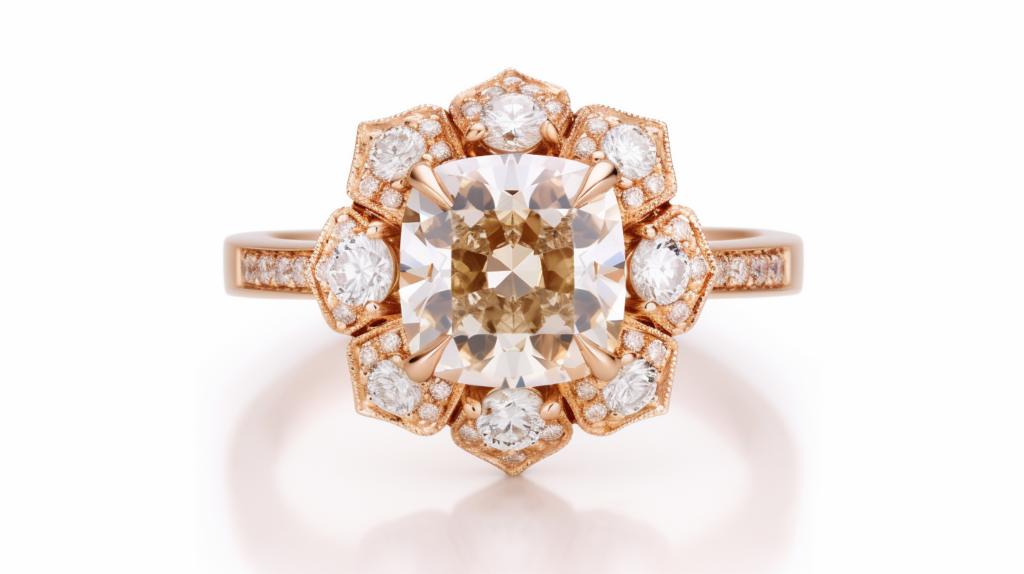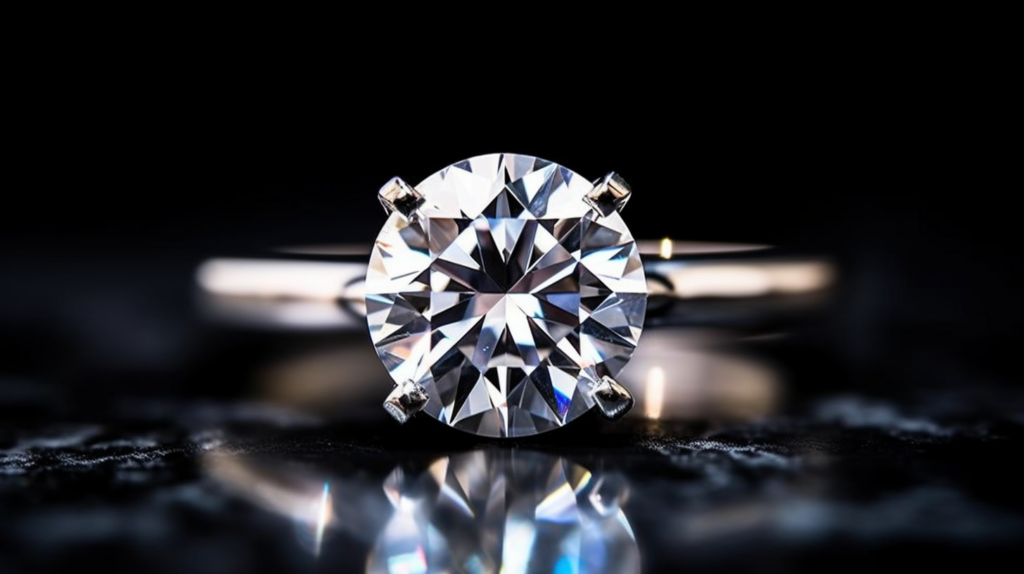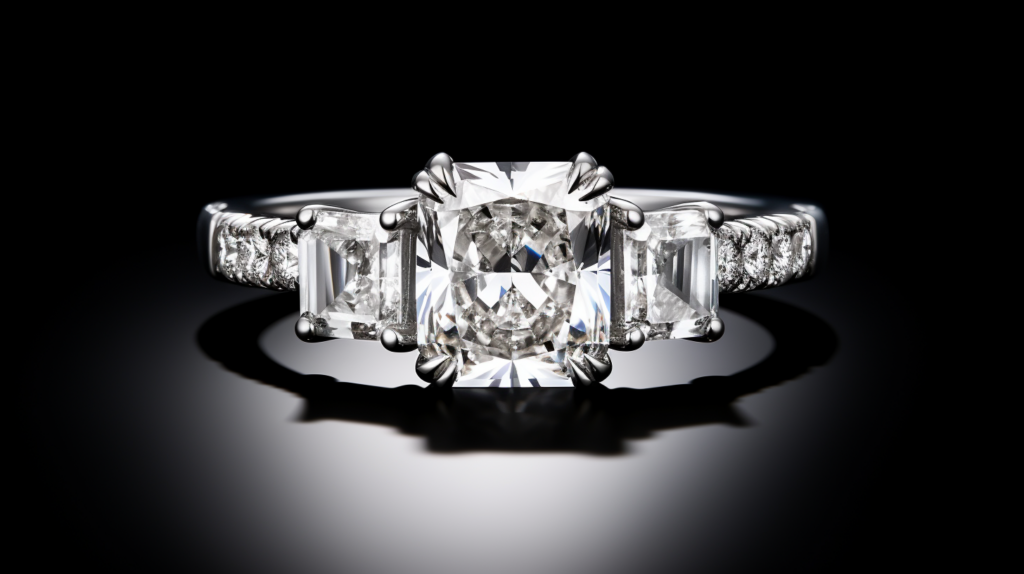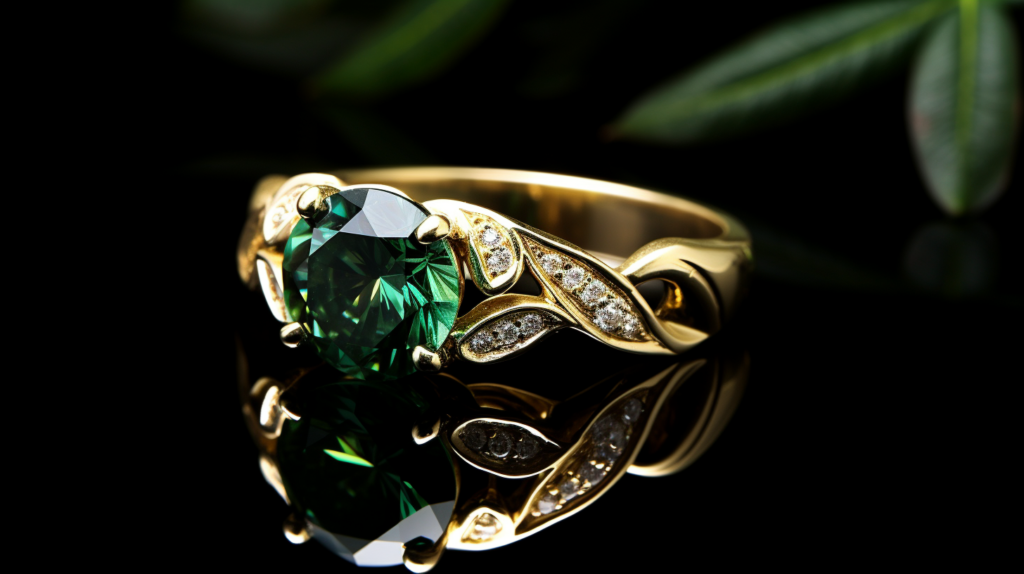Welcome to our comprehensive E Color Diamonds Guide! We’re here to provide you with all the information you need to make an informed diamond-purchasing decision when it comes to these exquisite gems.
Did you know that E color diamonds are second from the top in the alphabet of diamond colors? With their white appearance, often compared to white gold, they are virtually indistinguishable from perfectly colorless diamonds. They possess a natural color so clear that many mistake them for perfect diamonds.
Join BrighterGuide as we explore the characteristics, benefits, and comparisons of E color diamonds and discover why they’re an excellent choice for those seeking exceptional beauty without the hefty price difference of D-grade diamonds.
Key Takeaways
- E color diamonds are nearly indistinguishable from perfectly colorless diamonds, offering a pristine white appearance similar to white gold.
- These diamonds provide a balance between exceptional beauty and affordability, being less costly than the top-tier D-color diamonds.
- The choice of cut and clarity grade can significantly enhance the appearance and value of an E color diamond.

What is an E Color Diamond
As we delve into the topic of ‘What is an E Color Diamond’, it’s vital to understand its significant role in the diamond industry and the grading systems that guide diamond color. The diamond color scale, also known as the color grading scale, is employed to rate diamonds, classifying them from D to Z based on their traces of color. E color diamonds land right after D on the diamond color grade scale, situating them within the esteemed colorless range.
On a scale that starts with D, often referred to as the ‘perfect diamond’ and ends with F, E color diamonds offer a minimal color grade difference, lacking a noticeable yellow tint or even a slight tint. Such diamonds, especially those paired with a good gold setting—be it white gold or yellow gold—exhibit a white appearance and are virtually indistinguishable from perfectly colorless diamonds in most visual size comparisons. In fact, under precise viewing conditions, most people can’t discern the subtle difference between D, E, and F grades, also termed the colorless category. These are popular choices for diamond buyers who prioritize the absence of color and are often recommended by professional gemologists.
Choosing a Diamond Color Grade
When choosing a diamond color grade or traversing the alphabet of diamond colors for your E color diamond, it’s crucial to consider its clarity grade and the adjacent color grades. Clarity grades like VVS or VS, and even options like VS2 clarity or SI1 clarity, would harmonize with the colorless grade of an E color diamond, amplifying its beautiful color and considerable brilliance. Think of it as matching a white gold setting with a diamond engagement ring, which is a common choice among consumers. The carat weight of the diamond is another factor that can influence your diamond purchase over time, especially when considering the price range.
Whether you’re shopping at James Allen, Blue Nile, or browsing through thousands of diamonds with various carat combinations, always remember that the color grade is a major factor affecting the diamond’s price. While D color diamonds command a hefty price, E color diamonds offer a more affordable option without sacrificing the diamond’s beautiful brilliance.
E color diamonds are an exceptional choice for buyers looking for beautiful stones with near-colorless beauty. While there might be a price difference, especially when compared to the lowest color grade options, investing in an E color diamond is often seen as a smart move from both a beauty and money perspective.
Which Clarity Grade Goes Best With E Color Diamonds
We recommend choosing a VVS2 clarity grade to go best with E color diamonds for optimal beauty and value. However, even an SI1 clarity can still make an E color diamond look magnificent, given the right conditions. Here are five important points to keep in mind:
- VVS2 clarity grade: This grade ensures that your diamond will have very few, if any, visible tints under 10x magnification. It strikes a perfect balance between clarity and price, offering excellent value for the quality.
- Diamond price: The premium price of an E color diamond with a VVS2 clarity grade allows you to achieve exceptional beauty without having to empty your pockets completely.
- Visual differences: Opting for a VVS2 clarity grade ensures that you have a stunning, eye-clean diamond that showcases the full color spectrum, without paying a price difference for higher clarities.
- Pairing an E color diamond with the right setting, like platinum settings or even yellow gold settings, can make the diamond pop even more. Whether you’re buying it for an engagement ring setting or simply as a standalone piece, ensure you consider all the factors to make the best choice.
With insights from expert gemologists and detailed diamond color grading, you can make an informed decision, ensuring your diamond showcases its true brilliance and sparkle. An E color diamond is sure to shine, whether it is set against a white background or in the spotlight at a store. Don’t forget to sign up for our weekly newsletter for more insights and updates on the sparkling world of diamonds.

The Best Diamond Shapes for E color Diamonds
The most suitable diamond shapes for E color diamonds are round, princess, and emerald cuts. These shapes are known for their ability to showcase the colorless beauty of E color diamonds, allowing them to sparkle and shine with brilliance. The round cut, with its symmetrical facets, maximizes the diamond’s light performance and enhances its natural color. The princess cut, with its clean lines and sharp corners, highlights the diamond’s color and adds a modern touch to any piece of jewelry. The emerald cut, with its step-cut facets and open table, showcases the diamond’s color variations and allows for a mesmerizing play of light and reflection.
To help you visualize the differences between these diamond shapes, here is a comparison table:
| Diamond Shape | Description | Advantages |
| Round | Classic and timeless | Maximum brilliance and light performance |
| Princess | Modern and versatile | Sharp corners and enhanced color visibility |
| Emerald | Elegant and sophisticated | Color variations visible and unique play of light |
Each of these diamond shapes has its own unique characteristics that can enhance the beauty of an E color diamond. Whether you prefer the classic appeal of a round cut, the modern flair of a princess cut, or the elegance of an emerald cut, you can be confident that these diamond shapes will showcase the colorless beauty of your E color diamond.
How Much Does an E Color Cost
For our readers interested in E color diamonds, let’s explore how much an E color diamond costs. Here are some key factors that determine the price of an E color diamond:
- Diamond Color Grade: E color diamonds are considered to be in the top tier of colorless diamonds. Their near-perfect color makes them highly desirable and therefore command a higher price.
- Diamond Clarity: The clarity of a diamond refers to the presence of any internal or external flaws. E color diamonds with higher clarity grades, such as VVS or IF, will have a higher price due to their rarity.
- Carat Weight: The size of the diamond also affects its price. As the carat weight increases, so does the price of the diamond.
- Cut Quality: The cut of a diamond determines its brilliance and sparkle. E color diamonds with excellent cut grades will have a higher price due to their superior light performance.
- Metal Type: The choice of metal, such as white gold or yellow gold, can also affect the price of an E color diamond. White metals like white gold enhance the appearance of the diamond, while yellow gold provides a warm contrast.
It is important to note that the price difference between E color diamonds and lower-color grades can be significant. However, E color diamonds are still considered a popular choice for those seeking a perfect diamond without the premium price of D color diamonds.
Additionally, E color diamonds are often preferred for engagement rings and other jewelry settings due to their icy white appearance and compatibility with white metals.

Are E color diamonds worth buying?
When considering whether E color diamonds are worth buying, one of the key points to consider is the price benefit they offer. E color diamonds are solidly within the colorless range and appear icy white, making them virtually indistinguishable from higher color grades.
However, they’re less expensive than the top gemological clarities, making them an attractive option for those looking for exceptional beauty without breaking the bank.
There Is A Price Benefit
We should consider the price benefit when deciding whether E color diamonds are worth buying. Here are some key points to consider:
- E color diamonds fall within the colorless range of the diamond grading process.
- They have a colorless appearance and are virtually indistinguishable from higher-grade diamonds.
- E color diamonds offer a great balance between quality and affordability.
- The price of these diamonds is generally lower compared to higher-color grades.
- Personal preference plays a significant role when choosing a diamond, as some individuals may prefer the slight color variation found in lower color grades.
When it comes to buying E color diamonds, it’s important to understand your own preferences and budget. While these diamonds offer a beautiful colorless appearance, they may not be necessary for everyone. Ultimately, the decision should be based on personal preference and the desired color range within the color grade spectrum.

Top Insider Tips for Buying an E Color Diamond
One of our top six insider tips for buying an E color diamond is to consider the diamond’s cut quality for optimal light performance. The cut of a colored diamond plays a crucial role in enhancing its beauty and minimizing any yellow tint that may be present. A well-cut diamond will reflect light in a way that maximizes its brilliance and fire, giving the appearance of a whiter stone. This is especially important for E color diamonds, as they’re in the middle of the elite colorless range and any slight tint can be more noticeable.
To ensure the best-cut quality, it’s recommended to consult with an expert gemologist who can assess the diamond’s proportions, symmetry, and polish. They can determine if the diamond has been cut to maximize its potential for brilliance and sparkle. Additionally, consider setting the E color diamond in a gold setting, as the warm tones of gold can complement the absence of color in the diamond, further enhancing its beauty.
You should keep in mind that there may be small color differences between stones of the same E color when you are comparing them. Most of the time, though, these differences are so small that most people can not tell them apart without training. Ultimately, the choice between different E color diamonds will come down to personal preference and budget.

Conclusion
As diamond experts, we believe that E color diamonds are an excellent choice for those seeking a near-colorless and stunning diamond. E color diamonds fall within the elite colorless range and appear icy white, making them virtually indistinguishable from perfectly colorless diamonds. With their exceptional beauty and optimal light performance, E color diamonds are highly recommended for those who desire a diamond with excellent fire, brilliance, and scintillation.
The benefits of E color diamonds extend beyond their visual appeal. They’re also less expensive than diamonds with higher color grades, making them a more budget-friendly option without sacrificing quality. Additionally, E color diamonds are solidly within the colorless range, ensuring that their color won’t fade over time.
Whether you choose a round diamond or any other shape, an E color diamond is sure to make a statement with its color presence and reduction of any color tint. When considering diamond color grading, E color diamonds are a top choice for those seeking a visually stunning and nearly colorless diamond.
Sources
BrighterGuide is dedicated to providing accurate and relevant information as you explore the wonderful world of diamonds and jewelry. To this end, our writers refer to primary information sources in building each article that appears on this website. These include, but are not limited to, published news articles, government portals, research papers, and more.
- International Gem Society LLC. (2022, July 17). Is an E Color Diamond Worth the Price? – International Gem Society. International Gem Society. https://www.gemsociety.org/article/e-color-diamond/
- Jewelry Designs. (2023, July 7). Diamond Color – Diamond Color Grading scale. https://jewelrydesigns.com/diamonds/diamond-color/
- Shaddaie, A. (2023). Complete guide to the e color diamond. Estate Diamond Jewelry. https://www.estatediamondjewelry.com/e-color-diamond/